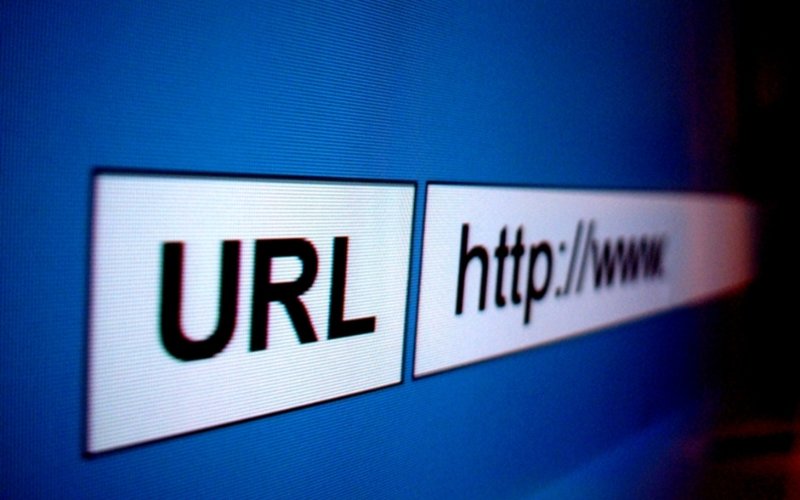Broken links and poorly structured URLs can silently undermine your website’s performance, affecting both user experience and search engine optimization (SEO). One of the key strategies to address these issues is to Improve URL Structure for Better SEO. Broken links, commonly resulting in 404 errors, can negatively impact how visitors and search engines view your site. Search engines see broken links as a sign of neglect, while users encountering 404 errors are often frustrated and may leave your site altogether. Meanwhile, efforts to Improve URL Structure for Better SEO through clean and logical formatting make your site more accessible to users and search engines, improving your overall ranking potential.
In this article, we’ll discuss why fixing broken links and the steps to Improve URL Structure for Better SEO are essential for maintaining a healthy website, boosting SEO, and providing a better experience for your users. By addressing broken links and focusing on strategies to Improve URL Structure for Better SEO, you can ensure that your site performs effectively for both users and search engines.
Why Broken Links Are a Problem

Broken links are hyperlinks that no longer lead to the intended destination because the page has been moved, renamed, or deleted. When a user clicks on a broken link, they are typically greeted with a 404 error page, which indicates that the requested page could not be found. Broken links are not only frustrating for users but also send negative signals to search engines, potentially damaging your SEO efforts. To mitigate this, it’s vital to Improve URL Structure for Better SEO by ensuring links remain functional and relevant.
Here’s why broken links matter:
- Poor User Experience: When users encounter broken links, it disrupts their experience on your site. Many users will leave after encountering a 404 error, increasing your bounce rate and lowering your chances of conversions. Regular checks and efforts to Improve URL Structure for Better SEO can prevent these disruptions and enhance user satisfaction.
- Wasted Crawl Budget: Search engines allocate a certain amount of resources to crawl your site. When they repeatedly encounter broken links, they may spend time crawling dead-end pages instead of indexing valuable content. This wasted crawl budget can hinder the discovery of new and important pages. To prevent this, work consistently to Improve URL Structure for Better SEO, ensuring search engines can efficiently crawl your site.
- SEO Penalties: Broken links signal to search engines that your site is poorly maintained, which can lead to a drop in rankings. Although search engines won’t directly penalize your site for a few broken links, having too many of them can negatively affect how your site is perceived and ranked. Addressing broken links and focusing on ways to Improve URL Structure for Better SEO can help safeguard your rankings.
Given these potential drawbacks, it’s clear that regularly identifying and fixing broken links is crucial for SEO success. Implementing practices to Improve URL Structure for Better SEO ensures that your site remains accessible, user-friendly, and optimized for search engines.
How to Conduct Regular Link Audits
A proactive approach to managing broken links starts with conducting regular link audits. A link audit is the process of identifying and fixing broken links across your website. By using specialized tools, you can systematically check for broken links and address them before they become a problem. Additionally, conducting these audits helps you Improve URL Structure for Better SEO by ensuring your site maintains a logical and clean linking framework.
Here’s how to conduct a link audit:
- Use Link Checking Tools: Tools like Screaming Frog, Google Search Console, Ahrefs, and Dead Link Checker are excellent for scanning your site for broken links. These tools provide a comprehensive report of 404 errors, allowing you to address issues quickly and Improve URL Structure for Better SEO by maintaining functional and efficient links.
- Audit Internal and External Links: Internal links (links to other pages within your website) and external links (links to other websites) can both break over time. Regularly checking both types ensures that your site provides a seamless user experience and helps Improve URL Structure for Better SEO by keeping navigation paths intact.
- Create a Schedule: Depending on the size of your website, aim to perform link audits monthly or quarterly. For larger websites with dynamic content, more frequent audits may be necessary to keep up with changes. Consistent audits not only fix broken links but also offer an opportunity to Improve URL Structure for Better SEO, ensuring the site remains optimized for search engines.
By performing regular link audits, you can catch and fix broken links early, keeping your website in optimal condition. These audits are essential steps to enhance user experience and Improve URL Structure for Better SEO, making your site more accessible to both users and search engines.
Implementing 301 Redirects for Broken Links

When a page on your website is removed, renamed, or relocated, it’s crucial to Improve URL Structure for Better SEO by using a 301 redirect to point users and search engines to the new destination. A 301 redirect tells search engines that the original page has permanently moved to a new location, and it transfers most of the original page’s SEO value to the new URL.
Here’s how to implement 301 redirects:
- Identify Pages to Redirect: Use tools like Google Search Console or Screaming Frog to find 404 errors and broken links. For each broken link, determine if the page has been moved, deleted, or renamed. Redirecting these ensures you maintain traffic and helps to Improve URL Structure for Better SEO.
- Use 301 Redirects Strategically: If a page no longer exists but there is a similar page, redirect users to the most relevant alternative. This not only preserves user experience but also reinforces efforts to Improve URL Structure for Better SEO by maintaining logical pathways for visitors and search engines.
- Avoid Chain Redirects: A chain redirect occurs when a 301 redirect points to another redirected page. This can slow down load times and confuse search engines, reducing the effectiveness of the redirect. Keeping redirects direct is another way to Improve URL Structure for Better SEO, ensuring both users and search engines access content efficiently.
Implementing 301 redirects not only helps resolve broken links but also plays a vital role in your strategy to Improve URL Structure for Better SEO, preserving your site’s authority and enhancing its overall performance.
Simplify Your URL Structure
A well-structured URL is critical for both users and search engines. URLs that are short, descriptive, and free of unnecessary characters make it easier for users to share and for search engines to understand the content of your page.
Key principles for simplifying your URL structure:
- Use Descriptive Keywords: Ensure your URLs include relevant keywords that clearly describe the content of the page. For example, a URL like
www.example.com/seo-tipsis far more user-friendly and SEO-friendly thanwww.example.com/page123. - Keep It Short and Simple: Short URLs are easier to read and remember. Avoid overly complex URLs that include unnecessary parameters, numbers, or symbols. For instance, instead of
www.example.com/post?id=4321, opt forwww.example.com/blog/seo-tips. - Use Hyphens, Not Underscores: When creating URLs, use hyphens (-) to separate words. Search engines treat hyphens as spaces between words, but they may not recognize underscores (_), potentially treating words as one long string.
A clean URL structure improves the overall user experience, encourages sharing, and makes it easier for search engines to crawl and index your site.
Avoid Using Special Characters in URLs

Special characters such as &, %, @, and others can create issues for both users and search engines. These characters may be interpreted incorrectly by browsers or cause broken links if not encoded properly. They can also make URLs difficult to read and unprofessional in appearance.
To ensure your URLs are clean and functional:
- Stick to Alphanumeric Characters: Limit URLs to letters, numbers, and hyphens to avoid potential encoding issues.
- Avoid URL Parameters When Possible: If you need to use parameters, such as for tracking purposes, ensure they are simple and well-structured. Too many parameters can confuse users and make the URL hard to understand.
By avoiding special characters, you keep your URLs clean, readable, and compatible with most browsers and search engines.
Conclusion: The Importance of a Logical and Clean URL Structure
Fixing broken links and improving your URL structure are essential steps in maintaining a healthy, high-performing website. Broken links lead to frustrated users, wasted crawl budgets, and diminished SEO performance, while a well-organized URL structure makes your site more accessible and easier to navigate.
By regularly auditing your site for broken links, implementing 301 redirects, and simplifying your URL structure, you can ensure that both users and search engines have a smooth experience on your site. Clean, descriptive URLs and well-maintained internal linking also signal to search engines that your site is well-organized, improving your chances of ranking higher in search results.
Consistent attention to these technical aspects of SEO will help you maintain a strong website foundation, supporting your overall SEO strategy and contributing to better search engine rankings.

